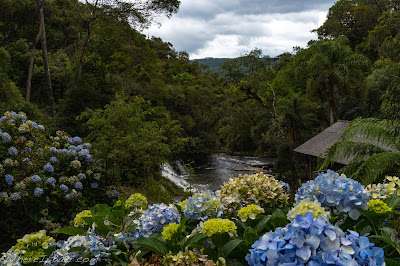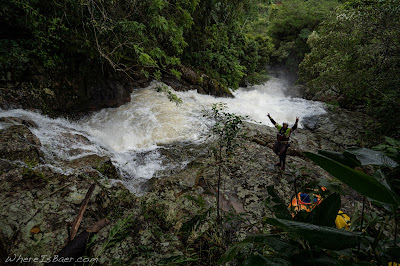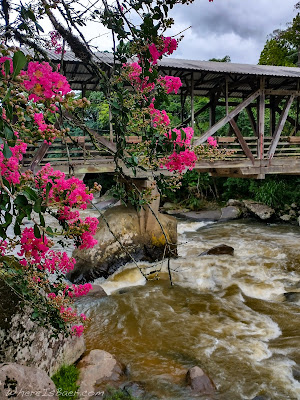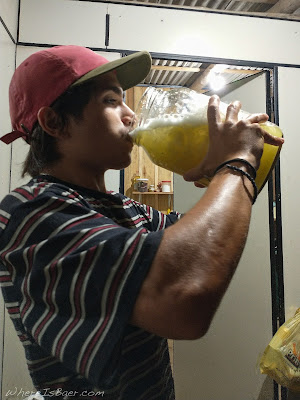Kayaking Internationally During a Plague
Often, I get questions about international travel. “How difficult is it to travel with a kayak?” “What about the food? Or the culture? Or the animals?” “How do you communicate?” One of my favorite questions… “How do you afford it?” Nowadays, I rebut that with, “How do you afford to stay in one of the most expensive countries in the world?” When I started traveling internationally, it was solely for kayaking! Over the years, traveling has become less about hardcore kayaking and more about exploring, looking for amazing landscapes, rivers, people, and culture. An open mind is key for these kinds of adventures.
Southeast Asia, 2015, bouncing down the road in yet another bus gave me plenty of time to get introspective. Being outside of the U.S. for prolonged periods was changing my perspective, and I scratched this into a notebook, “I’ve been traveling for so long that when I arrive “home” it doesn’t feel familiar anymore.” This statement feels truer every year, especially after spending time in a destination with a drastically different culture. This year, 2021, is now the fifteenth year that I’ve traveled outside the U.S. for paddling. Typically, when someone asks me, “Where is home?” I simply reply, “No”.
 |
| Joao Gabriel Araujo dialing in a second boof on the Black Canyon of the Cubatão |
About this time last year, I was on my way back to the States from China. The Covid-19 virus had started spreading a month earlier, and was spreading rapidly. The Chinese government was in the process of instating a very strict lock-down across the entire country. Flying back to the States, it felt like I had narrowly escaped the encroaching plague. Making the descent into the San Francisco airport, my mind was racing; would we all be escorted directly into quarantine? We landed and there were no special announcements. We exited the plane with wide eyes expecting immediate scrutiny. There were absolutely no precautions, no questions, no temperature checks, nothing! It was at this exact moment I realized we had a global pandemic on our hands. The opportunity to isolate between countries had come and gone.
Colorado, summer 2020, in the midst of a pandemic I made the tough decision to continue to work as a raft guide on the Arkansas River (my primary source of income). We were atrociously understaffed, as many of the guides had decided the risk wasn’t worth the raft guide wage. Late in the season, my body was beat down, and I had a light cough. I knew the sore muscles were from the lack of a day off, and I assumed my hoarseness was from shouting out safety talks twice a day through a mask… it wasn’t. Returning to the rafting outpost after a trip, I was pulled aside and informed that one of my co-workers had tested positive for Covid-19. The next day we closed the operation and the entire staff went to get tested. One other co-worker and I tested positive. The entire outpost shut down and the staff quarantined for two weeks. Then, with heavy hearts, and lighter pocketbooks, we went straight back to work. I felt horrible - how many people had I possibly infected?
 |
| Jeferson Werner scouting an upper section on the Rio dos Cedros |
Making the decision to travel again this winter was very difficult. Considerations: I had already tested positive and had a very mild experience. The case studies I had looked at showed the reinfection rates had been amazingly low and the chances of me being an asymptomatic carrier and bringing the virus somewhere new was also relatively low. So, I looked at the map. Balancing locations that I had on my personal tick list and cross referencing them with which countries were allowing citizens from the most plague-ridden country on the globe to enter - a ticket was purchased for Brazil.
Air travel, what a shit show. Everyone seemed to be doing their fair share of masking up, washing hands, and trying to distance (in an utterly packed plane). Then the food came… and everyone just dropped their mask and went to town.
On the Ground in Brazil
The airport staff is all in masks, temperatures are taken upon arrival, and space is given for social distancing, except around the always congested baggage claim. Cab drivers wear masks, keep windows down, and tend to be incredibly kind. Major hotels have made many modifications. Everyone is attempting to distance, and the rooms are allotted “cool down” time between clients. There is still so much contact. People trying to be kind and help with my bags or kayak create so many potential vectors.
Culturally, Brazilians are beyond welcoming. Being met with literal open arms, hugs, and the quintessential kiss on the cheek is still very commonplace. The local paddlers instantly welcome me into their community. We pack into overcrowded vehicles for shuttles, give high fives, and hugs at take outs. They invite me into their homes, we share meals, and Caipirinhas, (cachaça, which is a sugar cane alcohol, lime, and sugar). While conversing with paddlers in Brazil it seems that everyone has a story of getting Covid a few to nine months previously. Hardly anyone here is concerned about getting a new strain and for almost everyone it’s business as usual.
 |
| Justicia Rosa? Not sure, who's my botanist? |
The Golden Rule, “Do to others as you would have them do to you,” Luke 6:31. The idea is good, but the phrasing could be so much better. How about: treat people how they would like to be treated. Take a moment, learn the cultural differences, and create empathy with the folks around you. I want to be within the culture when I travel and not just be a tourist. It’s with this care I enter into homes, reciprocate kisses on the cheek, and share cocktails. All of these actions are way outside of my Stateside pandemic precautions. I struggle daily trying to balance being culturally correct with the personal greed of traveling. In the meantime, I continue to try and be on the defensive. Staying masked up well after everyone around me has unmasked and giving space until the hug is brought upon me.
Two months in Brazil with one more to go, and it’s been an absolute blast. I have a few more kayak missions lined up, but my mind wanders, pondering the reality of heading back to the States. The rules for travel have changed while I’ve been gone. Now, I need to get a quick test before departure. I don’t have a clue where or how I’m going to get that done, but that hurdle is for another day. What comes to the forefront of my thoughts is what happens when I get back on the ground in the States? How separated do I stay? And for how long? On a more introspective level, was it ignorant for me to travel to a foreign country in the first place? To possibly bring a virus to these kind, welcoming people? To possibly bring a new strain back to the States? Are the risks of travel becoming too great?
There are few steadfast rules with this new virus, and I’m sure the information and viewpoints I write here will become dated within a year, or maybe even by the time of publishing. In the meantime, I’m happy. Traveling allows me to be a part of different cultures and landscapes. This continued education allows me to open my perspective on the world.
 |
| Hydrangeas framing a dreamy location |
Benedito Novo
Put In: GPS (-26.782261, -49.396129) Note: Roadside pull off, local dogs love to bark but usually don’t bite, walk slightly upstream for a bonus rapid.
Take Out: GPS (-26.782984,-49.377784) Note: Upstream river right of the bridge allows fairly easy access with one barbed wire fence to cross.
Alternate Take Out: GPS (-26.776004, -49.372307) Note: Church parking lot, no barbed wire, and noticeably more sustainable access.
Class: 5
Flow: Visual; gauge is currently offline. When online, go to: http://ceops.furb.br/restrito/SisCeops/views_pub/tabela_nivel.html search Benedito Novo on the site; sister drainage to Rio dos Cedros, runs regularly.
Run Description: This is an absolute classic. It starts off with a stacked triple drop that leads into big slides and bigger holes. Soon you arrive at a dilapidated dam; get out and scout! This is a man-made feature and deserves at least a glance. Be mindful of the major rock formation downstream on river right as it is a massive sieve. Formiga (Ant) is the highlight rapid of the section, and can be seen from the takeout bridge. A long entrance of small ledges lead into a dynamic twisting left-hand turn backed up by multiple recirculating holes.
 |
| adventure by Chris Baer |












